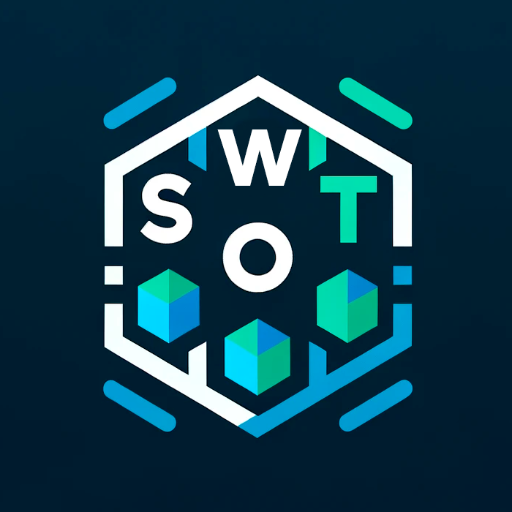Business Strategy - SWOT, PESTLE, BCG Matrix, etc.-business strategy tool
AI-powered strategic insights for businesses
Evaluate my business with BCG Matrix, and latest online industry trends.
Use PESTLE to analyze my startup business strategy.
Can you apply SWOT to our organization?
Step-by-step guide to analyze my business.
What does Porter's Five Forces say about our industry position?
Related Tools
Load More
SWOT Analysis
Analyzes startups using SWOT, PEST, and 5 Forces. [Updated version]
McKinsey Strategist
Critical business strategist offering blunt, balanced idea analysis.

Business Strategy Consultant
Business strategy development tool to support you through a consulting process or strategy development process. The knowledge used is gathered from 20+ years in management consulting at global level.

Business Mentor
Expert Business Mentor for comprehensive business planning and strategy guidance.

Business Strategy Manager
Directs the company's strategic planning, focusing on market analysis and business innovation.
Corporate Strategy Advisor
Guides strategic direction by providing expert business insights.
20.0 / 5 (200 votes)
Introduction to Business Strategy Frameworks
Business strategy frameworks like SWOT, PESTLE, and BCG Matrix are essential tools used by companies to analyze their business environment and formulate strategic plans. Each framework offers a unique lens through which to evaluate different aspects of a business or its external environment. SWOT (Strengths, Weaknesses, Opportunities, Threats) analysis helps businesses identify internal strengths and weaknesses, as well as external opportunities and threats. For example, a technology company might use SWOT to understand its competitive advantages (strengths), such as superior R&D capabilities, and its vulnerabilities (weaknesses), like high operational costs. It would also examine market trends (opportunities) and potential regulatory changes (threats). PESTLE (Political, Economic, Social, Technological, Legal, Environmental) analysis evaluates the macro-environmental factors that could impact a business. For instance, an international retailer might use PESTLE to assess the economic conditions in various markets, social trends affecting consumer behavior, and technological advancements that could disrupt its operations. The BCG (Boston Consulting Group) Matrix helps companies prioritize their product portfolios by categorizing them into four types: Stars, Cash Cows, Question Marks, and Dogs. A consumer goods company, for instance, might identify high-growth products as Stars, which require significant investment, and mature, low-growth products as Cash Cows, which generate stable revenue.

Main Functions of Business Strategy Frameworks
SWOT Analysis
Example
A small business owner conducts a SWOT analysis to identify internal capabilities and external challenges.
Scenario
A startup in the renewable energy sector uses SWOT to leverage its innovative technology (strength) while addressing limited market reach (weakness) and capitalizing on growing environmental regulations (opportunity) while preparing for potential new market entrants (threat).
PESTLE Analysis
Example
A multinational corporation employs PESTLE analysis to navigate complex international markets.
Scenario
An automotive manufacturer uses PESTLE to understand the impact of emission regulations (political), changing fuel prices (economic), and advancements in electric vehicle technology (technological) on its strategic planning.
BCG Matrix
Example
A diversified conglomerate uses the BCG Matrix to manage its portfolio of businesses.
Scenario
A consumer electronics company applies the BCG Matrix to identify its flagship smartphone line as a Star requiring investment, its mature home appliance segment as a Cash Cow, and its experimental VR products as Question Marks needing careful consideration of future potential.
Ideal Users of Business Strategy Frameworks
Business Owners and Managers
Business owners and managers use these frameworks to make informed strategic decisions, optimize resource allocation, and gain a competitive edge. They benefit by understanding internal and external factors that impact their business and by identifying opportunities for growth and areas needing improvement.
Consultants and Analysts
Consultants and analysts leverage these tools to provide strategic advice to their clients. They conduct thorough analyses using frameworks like SWOT and PESTLE to offer insights into market dynamics, competitive landscapes, and strategic positioning, thereby helping clients navigate complex business environments and achieve their objectives.

Using Business Strategy - SWOT, PESTLE, BCG Matrix, etc.
Visit aichatonline.org for a free trial without login, also no need for ChatGPT Plus.
Begin by accessing the platform to utilize the various strategic analysis tools without any initial cost or subscription requirement.
Identify your business needs and objectives.
Determine the specific strategic insights you require, whether it's for market analysis, competitive positioning, or organizational assessment.
Choose the appropriate analytical framework.
Select from SWOT, PESTLE, BCG Matrix, or other models based on your business context and the type of analysis needed.
Input relevant data and context.
Gather and enter data about your business environment, competitors, internal capabilities, and market conditions to inform the analysis.
Interpret the results and develop strategic actions.
Analyze the outputs from the chosen framework to identify strengths, weaknesses, opportunities, threats, and other critical factors, then formulate actionable strategies.
Try other advanced and practical GPTs
Stock Earnings Date GPT
AI-powered tool for tracking stock earnings dates.

Colorbot
AI-powered artistic creativity companion.
HorseTipExpert
AI-Powered Horse Racing Predictions.

MJ Command Generator (V6)
AI-powered prompt generation for Midjourney

ロMidjourney Prompt Generator (V6)
Unlock creativity with AI-powered prompts.

asif-dbrx
AI-powered solutions for all your needs

Dr. Joe Dispenza
Empower your mind with AI-driven meditation.

Assistant Aye
AI-powered content creation made easy.

Scholar GPT Pro
AI-Powered Assistance for Researchers

Academic writing aid
AI-powered academic writing refinement

院士
AI-Powered Tool for Academics and Researchers

Tax-Legal PA with Current Updates
AI-driven legal expertise, always updated.

- Market Analysis
- Strategic Planning
- Risk Assessment
- Resource Allocation
- Competitive Positioning
Frequently Asked Questions about Business Strategy - SWOT, PESTLE, BCG Matrix, etc.
What is the primary use of a SWOT analysis?
A SWOT analysis is used to identify and evaluate the Strengths, Weaknesses, Opportunities, and Threats related to a business or project, providing a clear framework for strategic planning.
How does a PESTLE analysis benefit businesses?
PESTLE analysis helps businesses understand the external macro-environmental factors—Political, Economic, Social, Technological, Legal, and Environmental—that can impact their operations and strategic decisions.
When should a company use the BCG Matrix?
The BCG Matrix is used to assess a company's product portfolio by categorizing products into four quadrants—Stars, Cash Cows, Question Marks, and Dogs—based on market growth rate and market share, aiding in resource allocation.
What is the advantage of using Porter’s Five Forces?
Porter’s Five Forces framework helps businesses analyze the competitive forces within an industry—threat of new entrants, bargaining power of suppliers, bargaining power of buyers, threat of substitute products, and competitive rivalry—to understand industry attractiveness and inform strategy.
Can these strategic tools be used for startups?
Yes, strategic tools like SWOT, PESTLE, and BCG Matrix are highly beneficial for startups to assess their market position, understand external influences, and develop informed growth strategies.